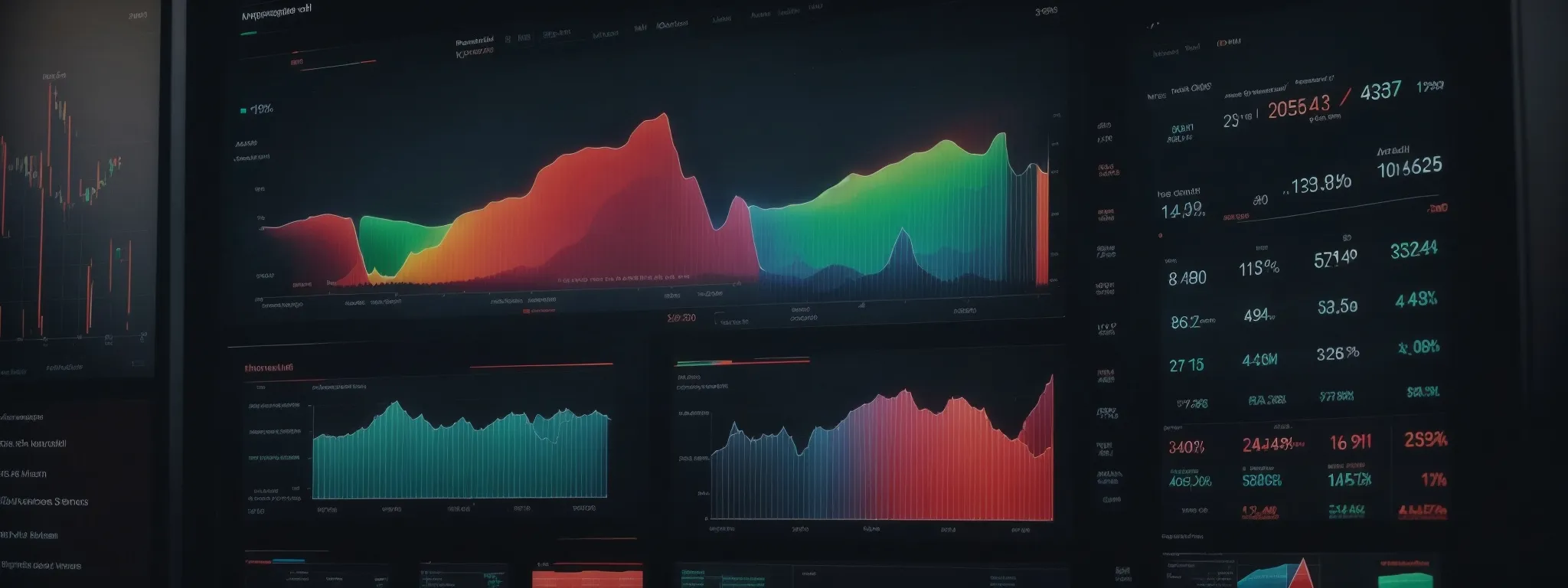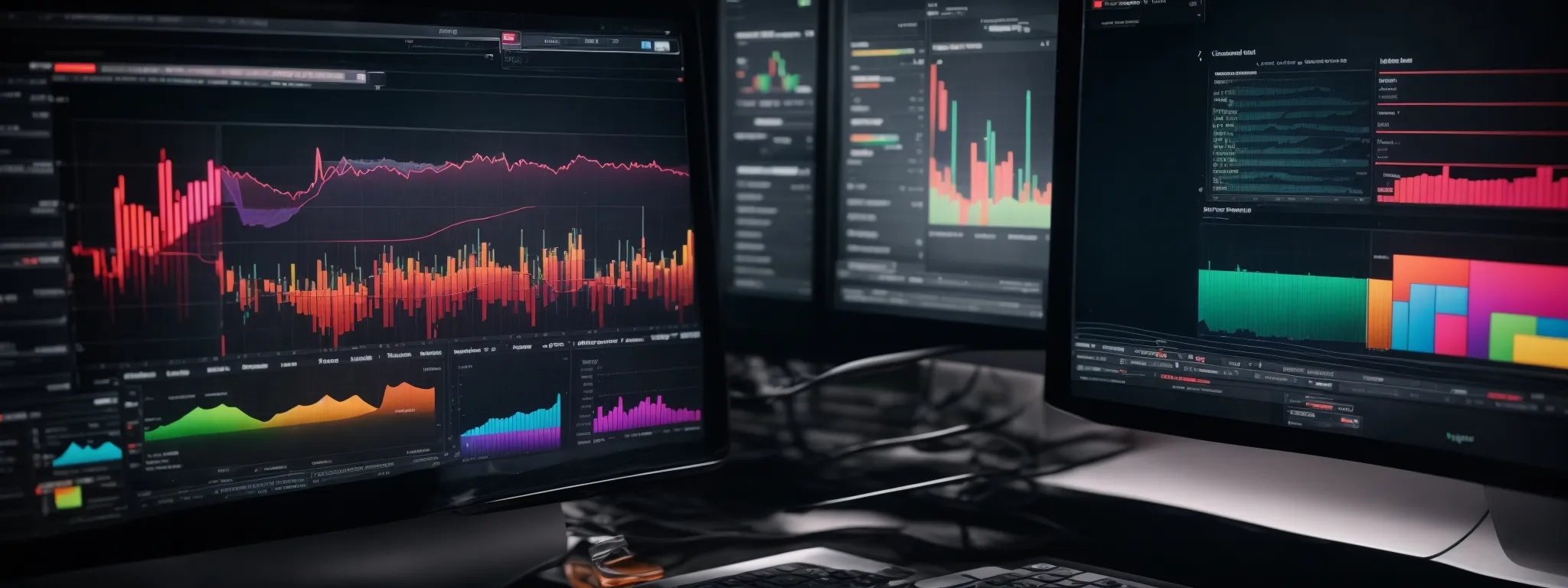KPIs & Metrics Recap in Digital Marketing
Understanding KPIs and Metrics in Digital Marketing: A Comprehensive Recap In the dynamic landscape of digital marketing, the efficacy of any marketing strategy is often measured by […]
Understanding KPIs and Metrics in Digital Marketing: A Comprehensive Recap
In the dynamic landscape of digital marketing, the efficacy of any marketing strategy is often measured by an array of pivotal metrics and key performance indicators (KPIs).
These elements serve as the compass for marketing teams, guiding them through the digital terrain to ensure their marketing efforts resonate with the intended audience and achieve the desired return.
Understanding the nuances of KPIs and metrics not only helps organizations align their digital efforts with business goals but also enables a precise analysis of campaign performance.
In this article, readers will discover how to set, track, and interpret these critical indicators to refine their digital marketing strategies and drive meaningful results.
Keep reading to unlock the full potential of your marketing endeavors through informed KPI management.
Key Takeaways
- Digital Marketing KPIs Are Crucial for Understanding Campaign Performance and Guiding Strategic Decision-Making
- Metrics Such as Website Traffic, Conversion Rates, and Customer Acquisition Cost Are Imperative for Evaluating Marketing Efforts
- Integrated Digital Marketing Tools Like SearchAtlas SEO Software Provide Comprehensive Views for Data-Driven Insights and Campaign Optimization
- The Regular Review and Adjustment of KPIs Ensure Marketing Strategies Stay Aligned With Business Objectives and Market Changes
- Continuous KPI Analysis Is Essential for Marketing Agility and the Optimization of Strategies to Meet Evolving Goals
Demystifying the Role of KPIs in Digital Marketing

In the dynamic field of digital marketing, the discerning use of Key Performance Indicators (KPIs) is essential for both strategizing and executing successful campaigns.
These quantifiable measures offer marketers a clear view of performance against objectives, revealing the effectiveness of each tactic within a marketing plan.
Understanding KPIs transcends merely tracking metrics; it involves a careful selection of indicators that align with overarching business goals and customer journeys.
From website traffic and visitor behaviors to conversion rates and customer acquisition costs, digital marketing KPIs serve as vital signposts that guide decision making, optimize marketing efforts, and ultimately steer organizations towards sustained revenue growth.
The Importance of KPIs in Strategy and Execution
At the crux of digital marketing, KPIs serve as the compass by which strategies are formed and actions are directed. With a multitude of traffic sources, marketing channels, and audience behaviors to analyze, KPIs clarify the focus enabling digital marketers to allocate resources where they are most effective.
The meticulous selection and tracking of KPIs allow companies to weave data narratives that identify successful initiatives and pinpoint areas requiring improvement. Effective KPIs not only measure outcomes but also shape future marketing activities to align with the company’s business objectives:
| KPI Category | Example Metric | Strategic Outcome |
|---|---|---|
| User Engagement | Bounce Rate | Improved Content Relevancy |
| Lead Generation | Conversion Rate | Higher Sales Opportunities |
| Customer Insight | Churn Rate | Enhanced Retention Strategies |
Examples of Common Digital Marketing KPIs
Digital marketing thrives on the clarity provided by KPIs, which illuminate the path toward achieving marketing and business goals. Website visits, an essential gauge of interest, directly reflect how an audience interacts with a brand online: did the marketing campaign draw in the intended target group, and did the content resonate sufficiently to keep them engaged?
- Understanding the intricacies of website traffic analytics is critical for assessing campaign performance and user behavior.
- Another significant marketing metric is the conversion rate, which reveals the effectiveness of a landing page or CTA in guiding users to take a desired action.
- Analysis of the customer acquisition cost (CAC) offers a lens through which the efficiency of marketing investments in relation to attracting new customers can be viewed.
These metrics are not just numbers; they narrate the successes and areas of improvement in a Digital Marketing Strategy. Observing the bounce rate and time spent on page sheds light on user engagement levels, thus informing content strategies that are designed to captivate and retain clients.
The Distinct Nature of Metrics in Digital Strategies

In the realm of digital marketing, metrics function as a fundamental toolkit for professionals looking to evaluate and enhance their strategies.
These performance metrics are not arbitrary; rather, they act as a barometer of a campaign’s health, enabling marketing teams to gauge the efficacy of their efforts across various digital landscapes.
By understanding different digital marketing metrics, marketers gain actionable insights that inform day-to-day decisions, prompting precise adjustments to marketing tactics that are paramount in driving a brand’s digital presence forward.
Understanding Different Digital Marketing Metrics
In assessing the tapestry of digital marketing, a marketer’s toolkit is incomplete without a profound understanding of distinct metrics. These units of measurement reveal the resonance of ad campaigns, efficacy of content, and engagement levels of website visitors, painting a picture crucial for fine-tuning marketing efforts.
Marketing teams rely on metrics such as click-through rates (CTRs) and engagement figures to scrutinize the performance of social media strategies, email marketing initiatives, and PPC Google Ads. By dissecting this data, strategies can be adjusted in real-time, ensuring that each facet of the digital marketing approach is contributing optimally to the overall marketing goals.
How Metrics Inform Day-to-Day Marketing Decisions
The acumen of digital marketers is pronounced through their ability to harness metrics for daily decision-making processes. This data-driven approach enables them to respond swiftly to fluctuating market trends and user engagements, ensuring agile adaptation to the audience’s evolving preferences.
Metrics shed light on the feasibility of achieving short-term marketing objectives, serving as a prelude to long-term strategic modifications. Significantly, they allow for the analysis of each marketing activity with respect to specific performance targets, leading to informed decisions that amplify the effectiveness of ongoing campaigns:
| Marketing Activity | Performance Metric | Decision Impact |
|---|---|---|
| Email Campaigns | Open-rate, CTR | Content Personalization Strategies |
| Google Ads | Quality Score, CPC | Bid Adjustments & Ad Optimization |
| Social Media Ads | Engagement Rate, Impressions | Target Audience Refinement |
The interplay between metrics and decision-making breathes life into the dynamic arena of digital marketing. Agility becomes the hallmark of a seasoned marketing team as they translate real-time data into actionable insights that champion optimally-performing marketing channels and minimize ad spending on those that falter.
Setting Up Effective KPIs for Campaign Success

Launching an impactful digital marketing campaign hinges on the foundation of clearly delineated marketing goals and their synchronization with an organization’s business objectives.
These preliminary steps crystallize the direction of marketing strategies, ensuring that the selected KPIs yield actionable insights that correlate directly with the aspirations and milestones the company aims to achieve.
The following discussion elucidates the methodical approach by which marketing goals are defined and KPIs are meticulously aligned, laying the groundwork for marketing endeavors that resonate with purpose and precision.
Steps for Defining Your Marketing Goals
The first step in defining marketing goals is to have a precise understanding of the company’s wider business objectives: What does the organization aim to achieve in the short term and the long term? This knowledge forms a bedrock upon which relevant and targeted digital marketing goals can be constructed, ensuring that every campaign contributes to the broader business narrative.
Next, it’s crucial to identify the customer’s position within the marketing funnel. Understanding whether the focus is on awareness, consideration, acquisition, service, or loyalty stages informs the specific nature of the marketing goals, tailoring them to engage customers at the right time with the right message:
| Funnel Stage | Marketing Goal Focus | Desired Outcome |
|---|---|---|
| Awareness | Brand Visibility | Increase in website traffic and followers |
| Consideration | Engagement | Higher time on page and interaction rates |
| Acquisition | Conversions | Increased sign-ups or sales |
| Service | Customer Support | Lowered service resolution times |
| Loyalty | Retention | Improved repeat customer rates |
Aligning KPIs With Business Objectives
Aligning KPIs with business objectives requires a significant degree of strategic planning and deep understanding of both marketing and business analytics. It’s about ensuring that the KPIs selected will directly influence the key factors that determine business success: profitability, market share, and customer satisfaction:
- Profitability KPIs might include return on investment (ROI) and average order value.
- Market share KPIs could be assessed with new customer acquisition rates and competitive positioning metrics.
- Customer satisfaction measures often involve net promoter score (NPS) and customer lifetime value (CLV).
For a KPI Framework to be effective, it must provide a digestible overview that correlates closely with the vision and aims of the organization. These KPIs need to act as touchstones for progress, spotlighting achievements and identifying areas where objectives are not being met—and prompting strategic readjustments to address these gaps.
Interpreting Data Through KPIs and Metrics

In the labyrinthine landscape of digital marketing, interpreting data through KPIs and metrics evolves beyond mere measurement—it’s a cultivated art that transforms raw numbers into an insightful storyline of campaign success and customer interactions.
Adept marketers understand this conversion of data into tactical knowledge is crucial for reading data trends and creating actionable insights.
Where numbers meet strategy, there lies the potential for data-driven decisions that enhance marketing effectiveness and ROI.
As such, a deep dive into interpreting data through KPIs and metrics illuminates how these analytical tools can provide valuable foresight into campaign performance and consumer behavior.
Reading Data Trends and What They Indicate
In the rich tapestry of digital marketing, reading data trends goes beyond the surface to reveal the nuanced story of how strategies unfold and perform over time. These trends provide direction for marketers on how to realign their efforts with consumer demand and marketplace shifts:
| Marketing Metric | Data Trend | Strategic Implication |
|---|---|---|
| Monthly Website Visits | Rising Growth | Expand Content Strategy |
| Newsletter Subscription Rates | Decline | Revise Engagement Tactics |
| Customer Retention Rates | Stagnation | Enhance Loyalty Programs |
Data point by data point, the story of a campaign’s reach and resonance unfolds, bestowing invaluable insights. These insights enable marketers to predict and pivot, turning potential challenges into opportunities for growth and innovation.
Turning Data Into Actionable Insights
The transformation of data into actionable insights is the bedrock of a proficient digital marketing strategy. Marketers must extract meaningful patterns from KPIs and metrics, effectively translating complex data into strategic actions that align with marketing objectives and drive enhanced performance outcomes.
| KPI/Metric | Insight Gained | Strategic Action |
|---|---|---|
| Organic Search Traffic | Increased due to SEO Efforts | Invest more in SEO content and monitor keyword rankings closely |
| Customer Lifetime Value | High Value in Repeat Customers | Develop retention programs and re-engage lapsed customers |
| Email Campaign CTR | Below Industry Average | Personalize email content and segment audience lists |
From a holistic standpoint, these actionable insights facilitate nimble shifts in focus and resources, ensuring that the marketing team continuously adapts and improves their tactics. It is through this meticulous interpretation and application that digital marketing efforts mature into powerful drivers of growth and customer engagement.
Tools and Platforms for Tracking KPIs and Metrics

In the realm of digital marketing, the adept monitoring and analysis of KPIs and metrics are instrumental in determining the success of online initiatives.
Tools and platforms that specialize in performance tracking have become the bedrock for marketers looking to gain insightful data.
These solutions not only simplify the measurement of campaign efficacy but also empower marketers with the capability to integrate multiple data sources.
This integration offers a comprehensive view of performance across diverse digital landscapes, enabling informed decision-making and strategic adjustments in real-time.
Below, the discussion will unpack how essential tools for monitoring performance are paramount in the contemporary marketing environment and how embracing integrated data sources is crucial for a holistic understanding of digital marketing success.
Essential Tools for Monitoring Performance
Within the ambit of digital marketing, the selection of robust tools for performance tracking is vital for interpreting KPIs and metrics adeptly. These platforms stand as gateways to discerning intricate details of campaign effectiveness, offering precise visibility into a multitude of data points, from user engagement to PPC campaign efficiency.
For instance, SearchAtlas SEO software exemplifies such a tool, integrating a suite of functionalities that streamline the monitoring of marketing performance. It functions as a pivotal resource for professionals aiming to track the success of their SEO strategies, equipping them with the insights needed to fine-tune their approach for optimal outcomes.
Integrating Multiple Data Sources for Holistic View
Modern digital marketing demands a cohesive analysis where separate channels and campaigns feed into a singular narrative. Employing platforms like SearchAtlas which can merge data from SEO, digital PR services, and PPC Google Ads, presents a unified dashboard that reveals critical insights from an aggregate of activities, empowering marketers with a complete understanding of their digital ecosystem.
Professionals require a panoramic view of their marketing landscape to adjust strategies with precision and agility. Such integration not only uncovers the interplay between different traffic sources and marketing channels but also demystifies the complex relationship between marketing efforts and customer behaviors, essential for enhancing customer lifetime value and optimizing overall marketing performance.
Evaluating and Adjusting KPIs Over Time

Within the vast and ever-evolving arena of digital marketing, the value of KPIs and metrics is paramount, yet they are not static elements.
To ensure ongoing success, businesses must engage in the periodic evaluation and recalibration of their Key Performance Indicators.
This practice is not merely a task, but a strategic part of the process that signifies a maturation in marketing efforts.
As goals shift and markets transform, so too must the markers of achievement.
This introductory discussion sets the stage for exploring the significance of revising KPIs and how continuous improvement through KPI analysis can propel marketing strategies forward, ensuring they remain aligned with current trends and organizational objectives.
When to Revise Your KPIs
Revising KPIs is a strategic necessity when market conditions shift or when a company’s long-term vision undergoes refinement. The occurrence of major product launches, shifts in buyer personas, or pivot in service offerings demand an immediate evaluation and potential realignment of KPIs to ensure they continue to serve as accurate measures of performance and success.
Regular intervals, typically on a quarterly or annual basis, provide structured opportunities for organizations to reassess their KPIs against the backdrop of the ever-changing Digital Marketing Landscape. This systematic review ensures that each KPI remains tightly connected to current marketing goals and the broader business strategy, facilitating timely adjustments in response to performance trends or strategic changes.
Continuous Improvement Through KPI Analysis
Continuous improvement through KPI analysis is entrenched in the iterative process that propels digital marketing strategies forward. By regularly scrutinizing the efficacy of each KPI, marketing teams maintain an upward trajectory, ensuring that strategies not only respond to past outcomes but also anticipate future market developments.
Diligence in KPI analysis breeds a culture of perpetual optimization, where informed alterations to marketing plans become the norm rather than the exception. The ability to swiftly maneuver in response to KPI feedback differentiates thriving campaigns from static endeavors:
| KPI | Frequency of Review | Impact of Adjustment |
|---|---|---|
| SEO Rankings | Monthly | Content and Keyword Strategy Refinement |
| PPC Campaign ROI | Quarterly | Budget Re-allocation and Bid Optimization |
| Email Open Rates | Bi-weekly | A/B Testing of Subject Lines and Send Times |
Executing a continuous feedback loop through KPI tracking fosters a responsive environment ready to seize opportunities. Streamlined adjustments, informed by precise KPI data, invariably lead to increased marketing effectiveness and heightened goal achievement.
Conclusion
Understanding KPIs and metrics is indisputably crucial for digital marketing success.
These measurable indicators not only track the performance of various strategies but also provide invaluable insights that guide resource allocation, strategy formulation, and execution.
They are the navigational beacons ensuring that every marketing effort is aligned with the broader business goals, from user engagement to conversion rates, and customer retention.
With regular analysis and refinement of KPIs, marketers maintain the agility necessary to adapt to shifting market conditions, meet evolving business objectives, and drive continuous improvement in campaign performance.
Tools and platforms that allow for the integration of multiple data sources give a more holistic view of marketing efficacy, fortifying decision-making processes.
Ultimately, a deep and dynamic understanding of KPIs and metrics empowers marketers to craft and modify strategies that deliver growth, enhance customer experiences, and achieve sustained competitive advantage.















































































